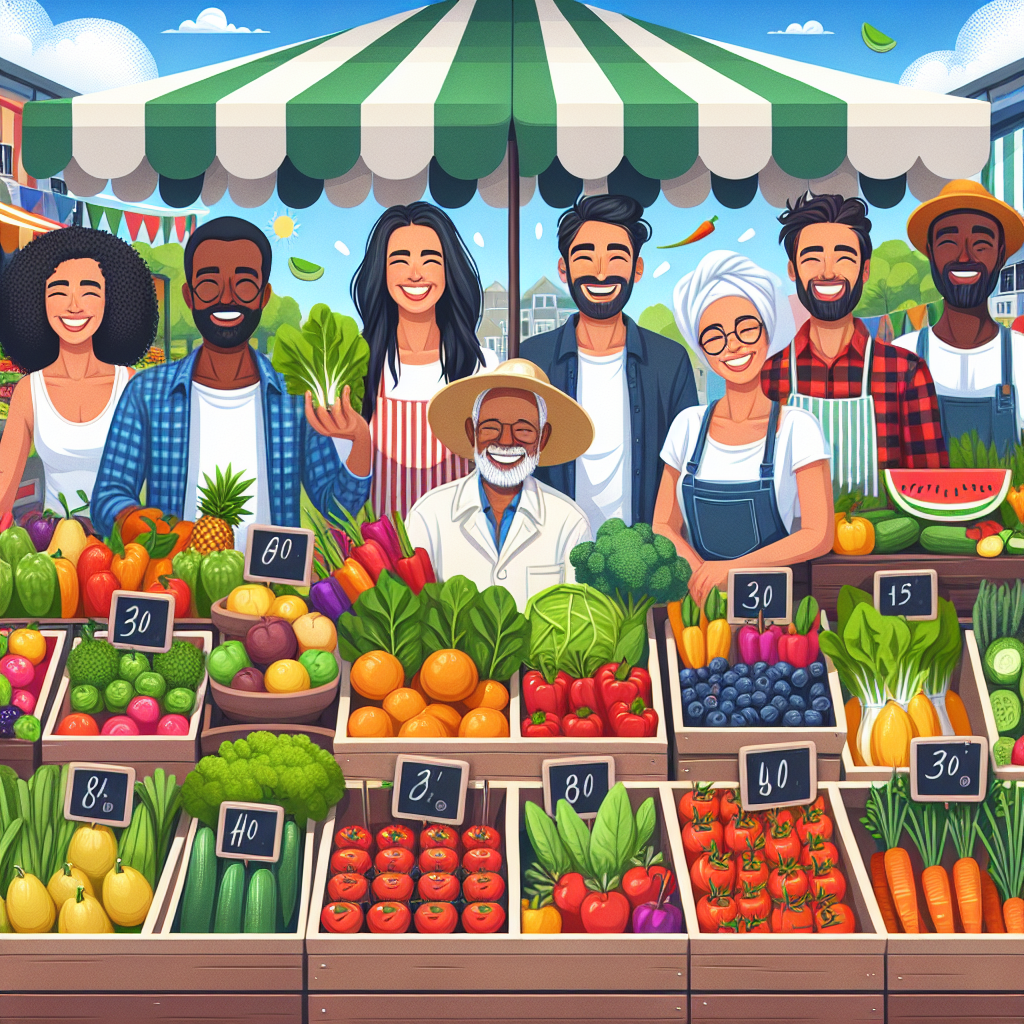Farmers’ markets are more than just places to buy fresh produce—they’re vibrant community hubs where you can connect with local growers, discover seasonal delights, and support sustainable agriculture. Whether you’re a first-time visitor or a regular, this guide will help you navigate your local farmers’ market like a pro.
Why Shop at a Farmers’ Market?
Farmers’ markets offer numerous benefits that go beyond what you’ll find in a supermarket aisle. Here’s why they’re worth exploring:
- Fresher, More Flavorful Produce: Since food is harvested at peak ripeness and sold directly to consumers, it retains more nutrients and tastes better.
- Support Local Economy: Your money goes directly to farmers and small businesses in your community.
- Seasonal Variety: You’ll discover fruits and vegetables at their prime, often including heirloom varieties not found in stores.
- Environmental Benefits: Local produce requires less transportation, reducing your carbon footprint.
Finding Your Local Farmers’ Market
Locating nearby markets is easier than ever. Try these methods:
Online Resources
Websites like the USDA’s Farmers Market Directory or local food advocacy groups maintain updated listings of markets in your area.
Social Media
Many markets have active Facebook pages or Instagram accounts where they post weekly vendor lists and special events.
Word of Mouth
Ask neighbors, coworkers, or staff at health food stores for their favorite market recommendations.
What to Bring to the Market
Come prepared to make the most of your visit:
- Reusable Bags: Bring sturdy totes or a wheeled cart for heavier items.
- Cash: While many vendors now accept cards, cash (especially small bills) is still king at most markets.
- Cooler: If you’ll be shopping in warm weather or have other errands after, pack a cooler for perishables.
- Shopping List: Helpful for meal planning, but stay flexible for unexpected finds.
Navigating the Market Like a Pro
Timing Matters
Early birds get the best selection, while late shoppers might score discounts as vendors pack up.
Take a Lap First
Walk the entire market before buying to compare quality and prices.
Meet the Farmers
Don’t hesitate to ask questions about their growing practices—most are happy to share their knowledge.
Questions to Ask Farmers
Engaging with vendors helps you make informed choices:
- “Is this produce grown using organic methods?” (Note: Some small farms follow organic practices but haven’t gone through expensive certification.)
- “When was this harvested?”
- “What’s your favorite way to prepare this vegetable?”
- “Do you have any specialty items not on display?”
Seasonal Buying Guide
Knowing what’s in season ensures you get the freshest, most affordable produce:
Spring
Look for asparagus, peas, strawberries, radishes, and tender greens.
Summer
Enjoy tomatoes, corn, peaches, berries, zucchini, and cucumbers.
Fall
Pumpkins, apples, pears, squash, and root vegetables abound.
Winter
Many markets operate year-round with storage crops like potatoes, onions, and winter squash.
Beyond Produce: Other Market Finds
Farmers’ markets often feature much more than fruits and vegetables:
- Farm-fresh eggs and dairy products
- Artisanal breads and baked goods
- Locally raised meats
- Honey and maple syrup
- Handmade crafts and home goods
- Prepared foods and food trucks
Making the Most of Your Purchases
Storage Tips
Learn proper storage methods to extend the life of your market finds. For example:
- Store herbs like cut flowers in water
- Keep tomatoes at room temperature
- Refrigerate greens in breathable bags
Preservation Techniques
When you find a great deal on seasonal produce, consider:
- Freezing berries or chopped vegetables
- Making jams or pickles
- Dehydrating fruits for snacks
Building Relationships
Returning to the same vendors creates connections and benefits:
- Farmers may set aside special items for regular customers
- You’ll gain insight into seasonal growing cycles
- Supports consistent income for small producers
Overcoming Farmers’ Market Myths
“It’s Too Expensive”
While some items cost more, consider:
- Higher nutrient density means better value
- Many markets accept SNAP/EBT benefits
- Buying in bulk or at season’s peak can save money
“I Don’t Cook Enough to Benefit”
Even simple preparations—like slicing fresh tomatoes with salt or sautéing greens—make excellent meals.
Getting Involved Beyond Shopping
Deepen your market experience by:
- Volunteering at market events
- Joining a CSA (Community Supported Agriculture) program
- Attending cooking demos or farm tours
- Advocating for local food policies
Farmers’ markets represent a return to community-based food systems where quality, relationships, and sustainability take center stage. Each visit supports local agriculture while bringing fresher, more flavorful food to your table. The more you engage with your local market, the more benefits you—and your community—will reap.
